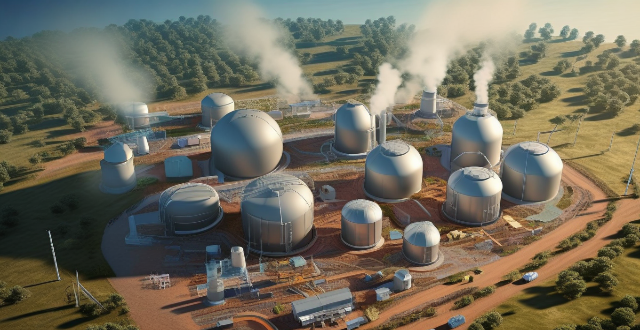Fusion power research aims to harness energy from fusing atomic nuclei, similar to the sun's process. Key developments include the ITER project, breakthroughs in magnetic confinement fusion, and advances in inertial confinement fusion. Challenges include technical hurdles, economic viability, and safety concerns. Fusion power has potential as an ultimate renewable energy source due to its unlimited and clean energy production, minimal environmental impact, and long-term sustainability.

Current State of Fusion Power Research
Fusion power research is a field that aims to harness the energy produced by fusing atomic nuclei, similar to the process that powers the sun. This technology has the potential to provide an almost unlimited source of clean energy, as it would use fuels such as hydrogen isotopes, which are abundant in nature.
Key Developments in Fusion Power Research
ITER Project
The International Thermonuclear Experimental Reactor (ITER) is a flagship project aimed at demonstrating the feasibility of fusion power on a commercial scale. ITER involves collaboration among multiple countries, including China, the European Union, India, Japan, Russia, South Korea, and the United States. The project is currently under construction in France and is expected to begin operations in the coming years.
Breakthroughs in Magnetic Confinement Fusion
Magnetic confinement fusion is one of the main approaches to achieving controlled fusion reactions. Significant progress has been made in this area through experiments with tokamaks (donut-shaped devices) and stellarators (complex structures resembling twisted doughnuts). These experiments have demonstrated sustained plasma confinement and increased temperatures necessary for fusion.
Advances in Inertial Confinement Fusion
Inertial confinement fusion involves using lasers or particle beams to compress fuel capsules to extremely high densities and temperatures, causing them to fuse. Researchers have made strides in developing more powerful lasers and improving the design of fuel capsules to increase the efficiency of these systems.
Potential Challenges
Technical Hurdles
Achieving sustained and stable fusion reactions remains a significant technical challenge. Issues such as plasma instabilities, material degradation due to high neutron flux, and tritium breeding need further study and resolution.
Economic Viability
While fusion power offers immense potential benefits, its economic viability compared to existing energy sources remains uncertain. The high costs associated with building and operating fusion reactors must be justified by their long-term energy output and environmental advantages.
Safety Concerns
Ensuring the safety of fusion reactors is crucial, particularly regarding potential radioactive byproducts and the risk of accidental release. Extensive research into safety measures and emergency protocols is essential for public acceptance and regulatory approval.
Potential as an Ultimate Renewable Energy Source
Unlimited and Clean Energy
Fusion power has the potential to provide virtually unlimited amounts of clean energy since its fuel, hydrogen isotopes, is abundant and produces no greenhouse gas emissions during operation.
Minimal Environmental Impact
Unlike fossil fuels, fusion power does not produce harmful pollutants or contribute to climate change. Its byproducts are primarily helium, a non-toxic gas, making it an environmentally friendly option.
Long-Term Sustainability
If successfully developed, fusion power could serve as a sustainable energy source for centuries, reducing dependence on finite resources like coal, oil, and natural gas.
In conclusion, while there are still significant challenges to overcome in fusion power research, its potential as an ultimate renewable energy source is vast. Continued investment and innovation in this field could lead to a transformative shift in how we generate and consume energy, paving the way for a cleaner, more sustainable future.